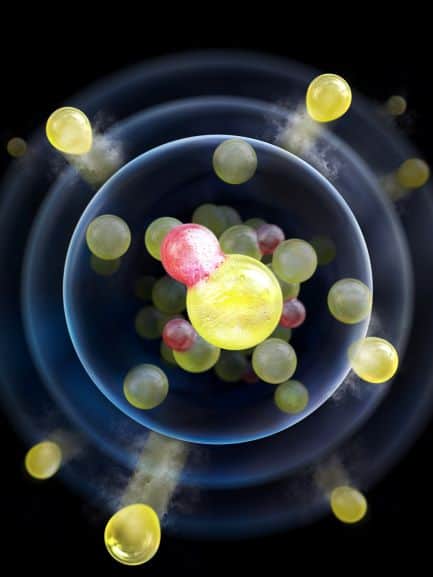
A new technique to cool reactive molecules to temperatures low enough to achieve quantum degeneracy – something not generally possible before – has been created by researchers in the US. In this temperature regime, the dominance of quantum effects over thermal fluctuations should allow researchers to study new quantum properties of molecules. As a first example, the researchers demonstrated how a slight change in applied electric field can alter the reaction rate between molecules by three orders of magnitude. The researchers hope their platform will enable further exploration of molecular quantum degeneracy, with potential applications ranging from quantum many body physics to quantum information processing.
When atoms are cooled close to absolute zero, the blur created by thermal effects that govern their behaviour in the classical world around us is removed, making their quantum nature clear. This has led to some fascinating discoveries. In ultracold quantum bosonic or fermion-pair quantum gases, for example, all the atoms in a trap can simultaneously occupy the quantum ground state, resulting in a wavefunction that is macroscopic.
Cooling and trapping molecules is much trickier because they are inherently more complex than atoms. Whereas atoms can only contain quanta of energy in electronic excitations, the chemical bonds in molecules can stretch, rotate and bend – and cooling molecules involves removing energy from all of these degrees of freedom. Moreover, the complexity of molecules increases the complexity of their collisions. Although elastic collisions are necessary to knock the fastest-moving molecules out of a trap and cool it, inelastic collisions dissipate heat in the trap.
Huge rewards
The rewards for success, however, are huge according to Jun Ye at JILA in Boulder, Colorado. “As is always the case in life, something negative has a positive side. Once you have molecules under control, you suddenly have so much more flexibility to control their quantum state.”
This week, Ye and colleagues published two new papers – one in Nature and one in Science. In the Nature paper, they applied an electric field to compress potassium and rubidium atoms in a 3D optical trap, inducing the atoms to pair up and thereby forming a 2D cloud of polarized potassium-rubidium molecules. Side-to-side collisions were elastic, whereas the head-to-tail ones were inelastic. As the molecules were polarized and confined to two dimensions, they were much more likely to collide side-to-side than head-to-tail. This allowed the researchers to achieve about 200 elastic collisions for every inelastic one, driving out the hotter molecules and cooling their sample to quantum degeneracy.
Scientific milestone
“When my former colleague Deborah Jin [who died in 2016] was still alive, we had a collaboration showing that, when you turned on the electric field, the molecules just got lost because you were enhancing the inelastic collisions,” explains Ye, “This year, we were able to reverse that process, and that’s the milestone that the scientific community has been looking forward to.”
In the Science paper, the researchers studied the effect of electric fields on the reaction rates of the cooled molecules with each other. They allowed the molecules to collide at multiple orientations in 2D, and monitored the number of potassium-rubidium molecules in the trap. As the researchers had suppressed simple inelastic collisions effectively to zero, the only remaining way for a particle to leave the trap was to react with another potassium-rubidium particle to form K2 and Rb2 molecules.
As expected from theoretical predictions, the researchers found that, as they tuned the electric field by a few per cent across a specific resonant frequency, the rate of reaction increased by three orders of magnitude as two energy levels became degenerate, reducing the activation energy barrier.

Physicists close in on a simpler route to quantum degenerate molecules
The researchers now intend to study other, more exotic phenomena using the new tool they have developed. “We are very interested in studying collective behaviour of molecules and quantum correlations in these fantastic low entropy systems,” says Ye. “That’s something we’re working on right now.” Further into the future, he says, “quantum information might be a really interesting direction to look. If you can control quantum coherence, if you can synthesize a system with low enough entropy that you have quantum control, and now you have this extra ingredient that we can tune the interaction – which is always really important to program a computer – all these ingredients are falling into place. We are certainly not there yet, but one can dream big.”
John Doyle of Harvard University in Massachusetts sees two major advances in the works: “One is this sample of Fermi-degenerate molecules that are kept away from each other due to long-range interactions…This opens up the door to polyatomic quantum gases,” he explains. “The other is the more fundamental idea that you can control chemistry exquisitely by tuning these long-range interactions. Their results showing that if you change the field by just a teeny amount you can drive a system from unstable to stable will, I think, be viewed as an archetypal achievement.”
- In this episode of the Physics World Weekly podcast, Jun Ye is in conversation with Physics World‘s Hamish Johnston about another of his research interests, atomic clocks.
